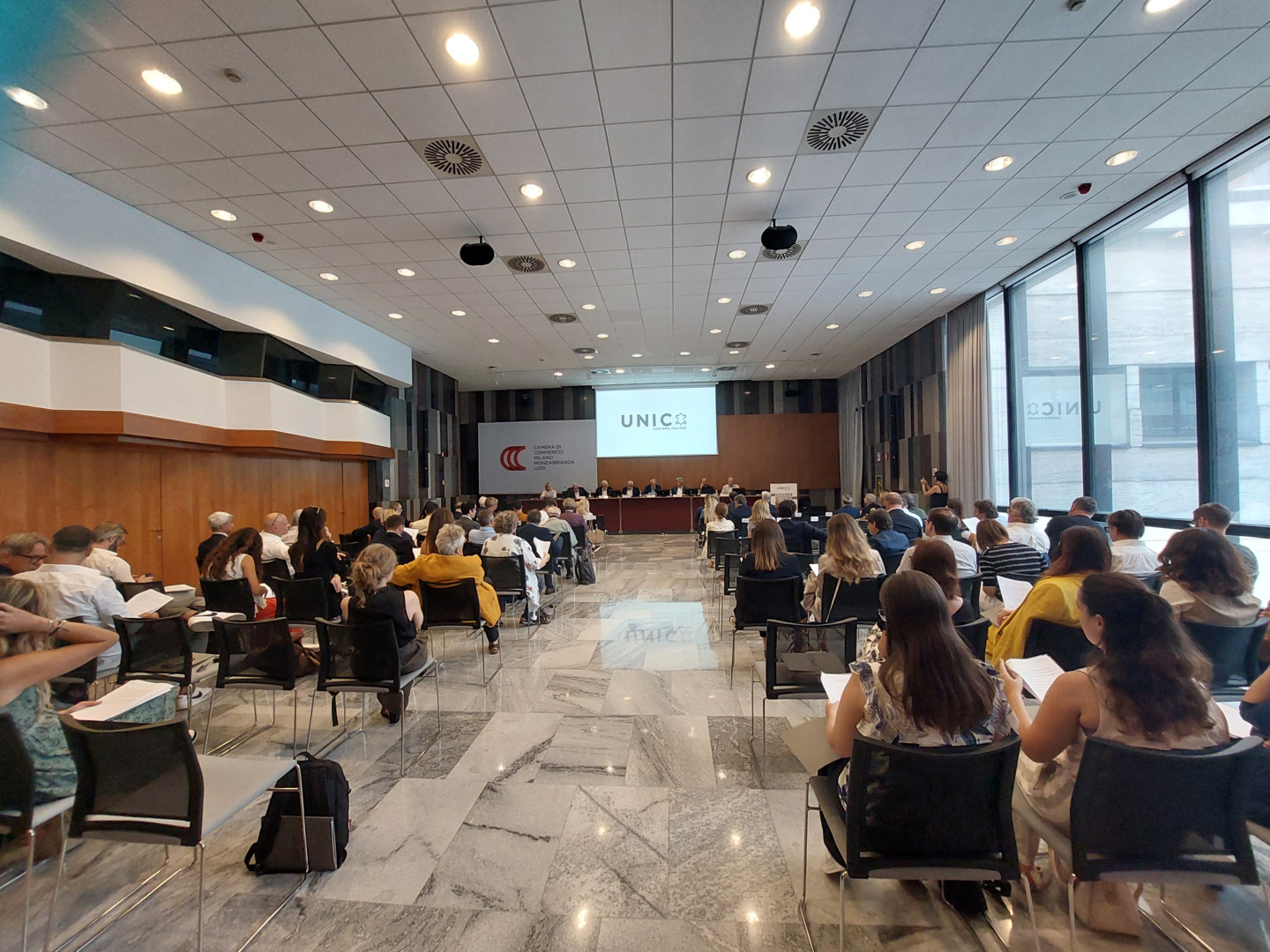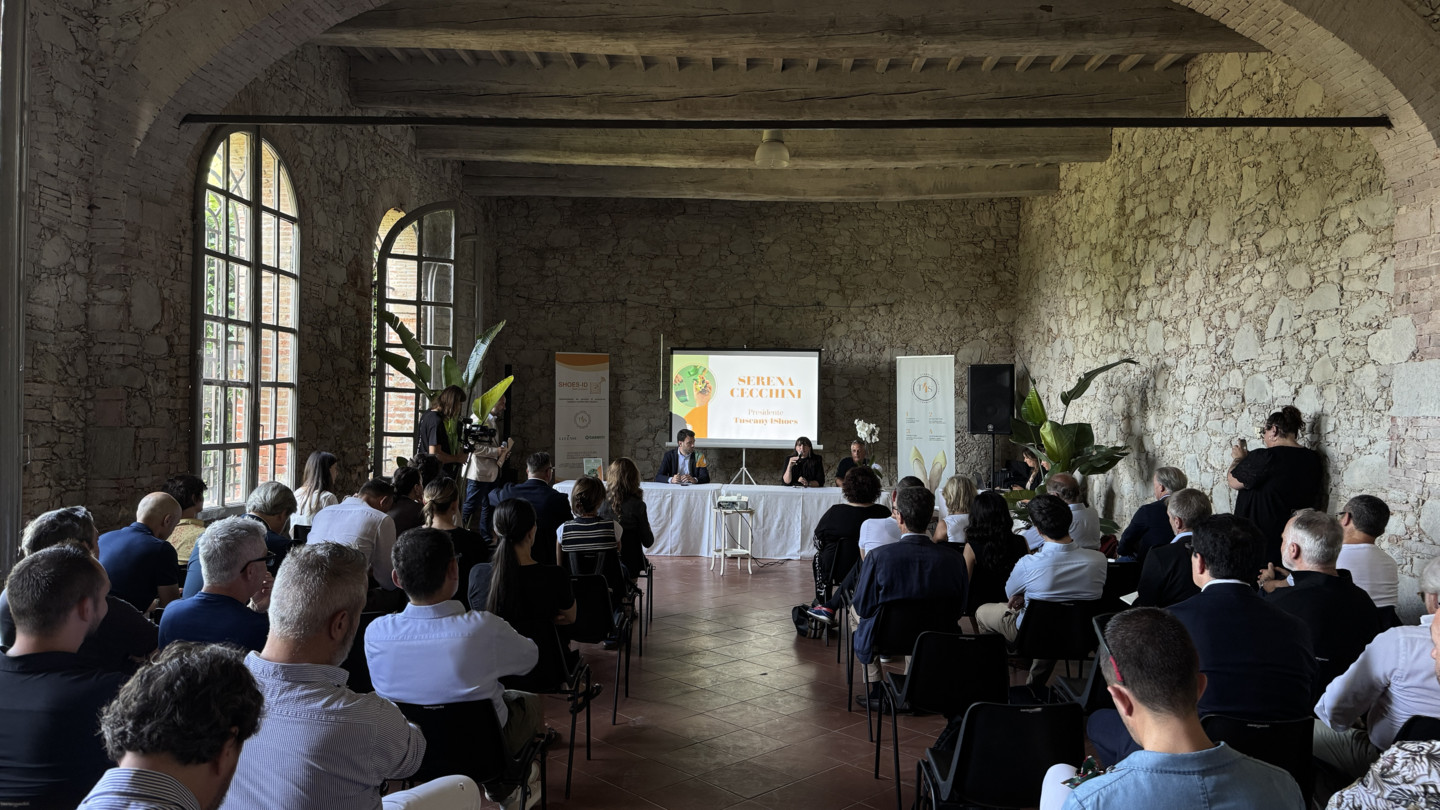
Conciatori: creiamo una casa comune a Bruxelles con gli altri materiali naturali
L’Assemblea UNIC del 1° luglio a Milano fa il punto sulle attività svolte e annuncia importanti progetti per affrontare le sfide del futuro
Continua a leggere...
Marzo 2025

Exports drop by 8.4% in value and turnover by 9.4%, and even luxury is not spared by the crisis in the sector.
It is a black and white photograph that taken by the Confindustria Accessori Moda Study Centre for Assocalzaturifici of the Italian footwear sector and presented at the last edition of Micam in February. The sector closes 2024 with a drop in exports (-8.4% in value) and turnover, which stands at Euro 13.21 billion (-9.4%, almost 1.4 billion less than in 2023). In addition to production, which slowed down to 124.1 million pairs (-16.1%), the number of employees (-3.8%) and companies (-5.5%) fell.
Giovanna Ceolini, President of Assocalzaturifici and Micam, commented on the complex economic moment being experienced by the Italian footwear industry: ‘The year that has just ended was characterised from the outset by a contraction in orders which, in a climate of uncertainty attributable to exogenous causes including geopolitical tensions, a new increase in energy costs and the slowdown of important economies, significantly affected the luxury sector as well. With repercussions for fashion multinationals producing in Italy, the driving force behind the recovery after the pandemic emergency. I hope that by the end of this year a restart can be realised for footwear companies, which represent one of the crucial sectors for Made in Italy’.
In detail, exports in the first 10 months of 2024 (latest official ISTAT figures available) lost -8.1% in value, with -4.4% in pairs, with a more penalising trend for destinations outside the European Union, affected as a whole by -11.4% in volume and -14.3% in value. Among these, positive results were recorded for China, which recorded increases of +2.5% in value and +18.9% in quantity in the first 10 months (despite a contraction of around -4% in value in the July-October four-month period, which would confirm the indications of a slowdown highlighted by many analysts), for the Arab Emirates, where +24% in value is accompanied by falls in volume, and for Turkey.
Sales did not grow in North America (with the USA -5.6% in value and Canada -15.7%) and in Russia (again down sharply, -22.4%, after the rebound in 2023). Flows to Swiss logistics hubs slowed down. Among EU partners, moderate reductions for France (-1.9% in value) and Germany (-4.1%, holding up in quantity).
In terms of product type, results were not very comforting for all sectors, with the sole exception of shoes with rubber uppers, whose exports (limited to 4.4 million pairs in the months considered) grew by +12.7% in volume and +5.3% in value. On the other hand, footwear with uppers in leather – which has always been a characteristic of Italian production and accounts for 65% of foreign sales in value terms – recorded overall contractions close to -6% in quantity and -7.4% in value, with 70.6 million pairs sold abroad in the first 10 months of 2024.
The sector’s trade balance, although showing a surplus in the first 10 months of EUR 4.2 billion, appears to be decreasing by -11.2%, despite the -5.5% drop in imports. It is estimated to reach just under EUR 5 billion a year compared to EUR 5.7 billion in 2023.
On the domestic side, household purchases fell by -1.4% in expenditure and -2% in quantity in the 12 months to 2024 compared to the 2023 final, still only -5.3% in value.
In this complex scenario, the repercussions on business demographics and employment are inevitable. The year closed with yet another negative balance in the number of active companies. At the end of last December, there were 3,369 shoe factories in Italy (between industry and handicraft), a decrease of 195 units (i.e. -5.5%) compared to 2023, when there were 3,564. The number of employees, according to the Infocamere-Movimprese database, instead fell in 12 months by -2,798 workers to 70,841 (-3.8%).
The CIG hours authorised by INPS for companies in the leather sector rose to 36 million, an increase of +128.2% over 2023. Levels that in the last 15 years were exceeded in only two cases, namely by the record authorisations of 2020 and 2021, years of full pandemic emergency. In comparison with pre-Covid 2019, however, current hours appear to have more than quadrupled (+334.1%), just as they are 21.4% higher than in 2010, during the global economic crisis.

L’Assemblea UNIC del 1° luglio a Milano fa il punto sulle attività svolte e annuncia importanti progetti per affrontare le sfide del futuro
Continua a leggere...
È disponibile il programma dell'evento internazionale dedicato ai tecnici delle calzature e a tutti gli operatori del settore.
Continua a leggere...
Il titolo "Green Day" dell'evento svoltosi con il sostegno del Comune di Capannori il 27 giugno 2025 sintetizza I tanti interventi riguardo moda sostenibile e responsabilità ambientale.
Continua a leggere...Devi effettuare l'accesso per leggere questo contenuto gratuito
Questo contenuto richiede un'abbonamento per essere consultato. Sei già abbonato? Accedi